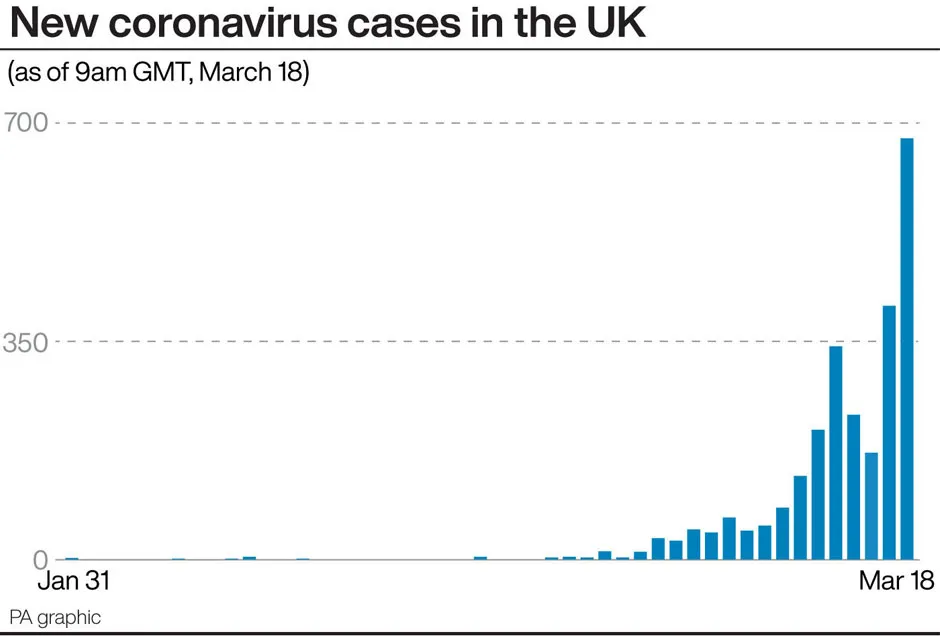Many institutions and scientists across the world are rushing to develop a vaccine for COVID-19.However, most vaccines must go through the same process before they are ready for use on the public and can be mass-produced.
So what is the usual process?
Vaccines harmlessly expose the body’s immune system to the virus or bacterium, causing it to recognise them as dangerous and learn how to resist them. This means that if the body comes across the infection, it knows how to defend itself.
They are given to healthy people, and mainly children, so the level of acceptable risk is much lower than with other medicines.
Read more about coronavirus vaccines:
- Coronavirus vaccine: first volunteers receive trial dose in US
- Coronavirus vaccine: UK scientists work to avoid future outbreaks
First, there has to be laboratory testing and development which involves “in vitro” testing – test tube experiments – and “in vivo” testing, usually in animals, often mice.
After researchers put the vaccine through rigorous tests and can demonstrate that it works in animals, they can move on to an initial trial in a small number of humans.
This makes sure the vaccine has no major safety concerns, and allows scientists to work out an effective dose in humans.
The next phase is a trial in a larger group of people – several hundred – looking at whether a vaccine works consistently, and whether it generates an immune response. Potential side effects are also looked at.
A third phase sees the vaccine tested in a much larger group of people – potentially thousands – and allows statistically significant data to be gathered on the safety of the potential vaccine and how well it works.

If all goes well, the next stage involves an expert review of all trial data by the Medicines and Healthcare products Regulatory Agency (MHRA) or the European Medicines Agency (EMA).
The regulators check the trials show that the product meets the necessary efficacy and safety levels. They also make sure that, for most people, its advantages far outweigh the disadvantages.
Post-marketing analysis is also conducted to monitor the effects of the vaccine after it has been used in the population.
All of these stages mean it can take years for an effective vaccine to be developed and ready for market.
UK scientists are among those involved in the global effort to create a vaccine for the current coronavirus outbreak.
This includes a team at the University of Plymouth who are working on a coronavirus vaccine aimed at preventing outbreaks similar to the COVID-19 pandemic while on Monday American researchers administered the first doses of an experimental vaccine to humans.
Read the latest coronavirus news:
- Blood type A 'more vulnerable' to coronavirus
- New COVID-19 test gives results in just half an hour
- Coronavirus: Is hand-washing really the best thing we can do to stop the spread of COVID-19?
Scientists at the Kaiser Permanente Washington Research Institute in Seattle started a first-stage study, funded by the National Institutes of Health, of the potential vaccine by injecting healthy volunteers.
Researchers said that because the vaccines do not contain the virus, there is no chance of participants getting infected.
However, even if everything goes well, a vaccine is not expected to be ready for widespread use for at least a year.
University of Cambridge researchers are also working on a potential vaccine.
Coronaviruses are named after their appearance – they are spherical objects which have “spike” proteins that sit on the surface.
Professor Jonathan Heeney, head of the laboratory of viral zoonotics at Cambridge, and his team are using computer modelling of the virus’s structure and identifying chinks in its armour, crucial pieces of the spikes that will form part of the vaccine, to disable the virus but without making the infection worse.
How do viruses jump from animals to humans?
Every animal species hosts unique viruses that have specifically adapted to infect it. Over time, some of these have jumped to humans – these are known as ‘zoonotic’ viruses.
As our populations grow, we move into wilder areas, which brings us into more frequent contact with animals we don’t normally have contact with. Viruses can jump from animals to humans in the same way that they can pass between humans, through close contact with body fluids like mucus, blood, faeces or urine.
Because every virus has evolved to target a particular species, it’s rare for a virus to be able to jump to another species. When this does happen, it’s by chance, and it usually requires a large amount of contact with the virus.
Initially, the virus is usually not well-suited to the new host and doesn’t spread easily. Over time, however, it can evolve in the new host to produce variants that are better adapted.
When viruses jump to a new host, a process called zoonosis, they often cause more severe disease. This is because viruses and their initial hosts have evolved together, and so the species has had time to build up resistance. A new host species, on the other hand, might not have evolved the ability to tackle the virus. For example, when we come into contact with bats and their viruses, we may develop rabies or Ebola virus disease, while the bats themselves are less affected.
It’s likely that bats were the original source of three recently emerged coronaviruses: SARS-CoV (2003), MERS-CoV (2012) and SARS-CoV-2, the cause of the 2019-20 coronavirus outbreak. All of these jumped from bats to humans via an intermediate animal; in the case of SARS-CoV-2, this may have been pangolins, but more research is needed.
Read more: